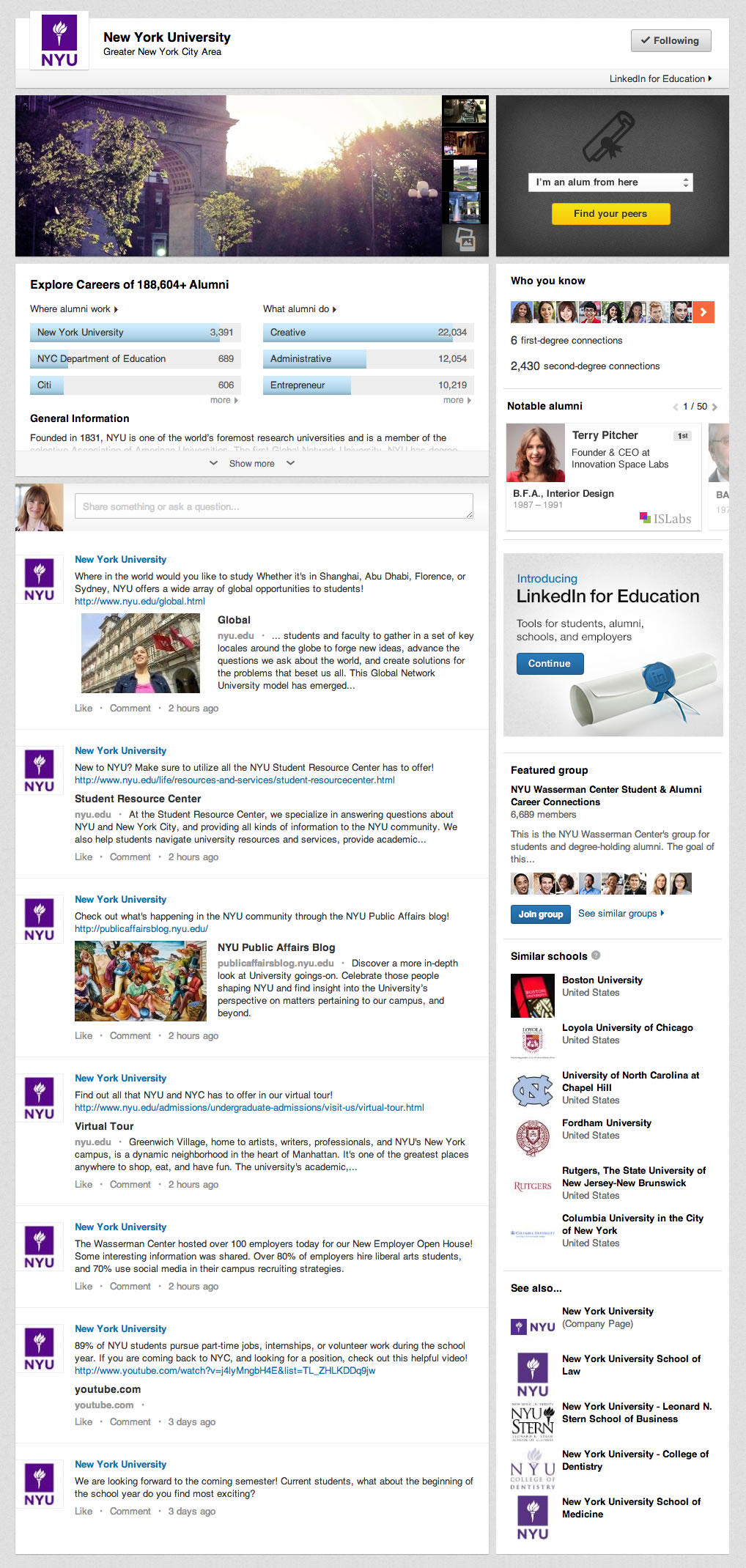While there has been quite a lot of discussion about how Facebook may be losing its cachet among younger users who are going elsewhere for their social media kicks, today LinkedIn made a bold move to start reaching out itself to this very lucrative, if fickle, audience: is beginning to promote itself to high school students (“13+ for most countries around the world” a spokesperson explains to me) and it has launched University Pages, dedicated pages for universities for people to add to their profiles and to reach out to people. LinkedIn hopes that both moves will not only expand the reach of how people use its site as their default anchor for resume-style information online. And also how it, too, could potentially tap into this user base to begin long-term relationships.
Both of these are getting rolled out globally, with the younger users starting to get accepted beginning September 12.
LinkedIn tells me that these two new initiatives “are really the first step[s] towards a longer vision to help students, parents, and university faculty get a head start on career mapping.”
With younger students this is an interesting development: it’s aimed at those who are already starting to think about what careers they might like to pursue and who they might start to get connected with now to achieve that. While internships are not part of today’s announcements, this seems like a very natural extension of what LinkedIn already offers for jobseekers — with recruitment recently getting a bump when LinkedIn finally made job listings searchable from mobile devices, and now also lets users apply directly from mobile, too.
The university pages, meanwhile, will start with listings for about 200 institutions, including NYU and the INSEAD business school in Europe, with thousands more coming in the future.
Christina Allen, head of the products for higher education at LinkedIn, describes University Pages as the “cornerstone” of the company’s strategy in education services.
They will start with offerings equivalent to what company pages offer to businesses: universities, she notes, can use them to reach out to prospective students, current students, and to alumni. This in itself is a very interesting idea. For example, for universities that may currently have very patchy outreach to former students, in some regards, tracking them in a social network focused around working could give those schools a better shot at things like fundraising, by targeting those who are in lucrative positions. You know that if someone is listing their university on their public resume on LinkedIn, they may be more likely to be the type who will donate. To be honest, I’m surprised the alumni network aspect was not developed more by Facebook, considering that university networks was where it first got its start.
You can see a lot of potential ways that this might subsequently develop, too. Here’s one: if LinkedIn already is building infrastructure for job applications and resume collection, it seems like a no-brainer that some of this could be modified also to help institutions with their admissions process, by automating part of it based on LinkedIn information.
That’s before you start to consider how individuals could use these to tap into networking opportunities for jobs, which is one of the more basic ways you could imagine something like this getting used by students or graduates.
For a company that is still working hard to develop additional revenue streams on its platform, adding these extra features could help LinkedIn graduate into the bigger leagues.

